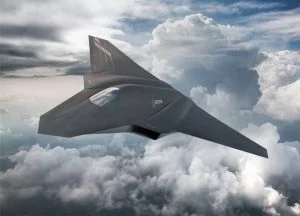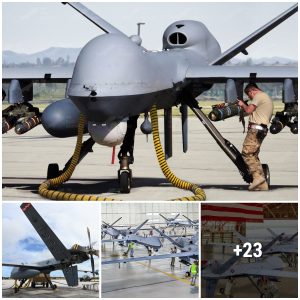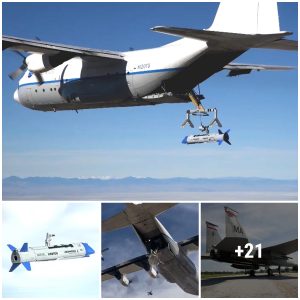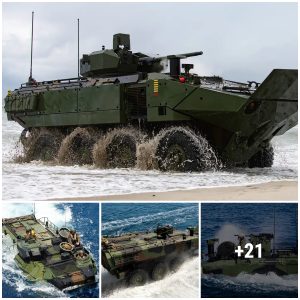Fighter aircraft are the core combat capability of the U.S. Air Force. And as its primary fighters age, their ability to perform various missions in the future is increasingly being questioned.
The USAF predicts by 2030; the F-22 will no longer be sufficiently survivable to secure air supremacy. In order to stay well ahead of China’s J-20 and other enemy aircraft, as well as the increasingly sophisticated ground-based air defense systems around the world, a follow-on fighter is desperately needed.
Since 2018, the Air Force has invested more than $2.5 billion in developing next-generation air superiority (NGAD) systems, with a budget of $1.525 billion for NGAD in fiscal 2022 and $1.658 billion in fiscal 2023. By 2025, the project budget will grow to at least $9 billion. While the program remains highly classified, for now, the Air Force has gradually begun to disclose details about NGAD.
In its fiscal 2022 budget rationale, the Air Force said NGAD ensures we maintain air superiority in the future by introducing game-changing technology now. There is more than one model of NGAD, which the U.S. Air Force calls a “family of systems.”

That will include at least one human-crewed aircraft and an undisclosed number of crewless aircraft, some with sensors or more weapons while others. There will be electronic warfare or ground attack capabilities so that the NGAD can easily penetrate enemy defenses and strike any target on the battlefield.
The F-22
The F-22 is about to serve 20 years; many technologies have fallen behind. Several problems have been found in the supply of sparer parts. With the use of many advanced detection methods such as anti-stealth radar, the F-22 has failed to ensure the “stealth” capability.
The F-22 will spend $344 million to upgrade new sensors in fiscal 2023 as a pre-NGAD transition. To secure NGAD’s budget, the Air Force plans to retire some F-22s in 2023.
The maintenance status of many F-22s is worrying. An NGAD “full-scale flight demonstrator” has already flown for the first time in 2020, and the U.S. Air Force says it has “broken a bunch of records.” NGAD will adopt an entirely new procurement model, which does not necessarily have to be manufactured by the company that designed it.
It will only produce 50 to 100 aircraft, developing new models every five years, reducing the technology refresh rate from decades to decades.
The life of the whole machine will not reach 30 to 40 years, but only 12 to 15 years. This approach can shift the focus of limited funding from maintenance to design and procurement. Parts shortages plague almost all models, and NGAD plans to adopt a new model for parts procurement that no longer requires original manufacturers.
The NGAD’s workhorse will likely be the same as the F-22 in-ceiling and maximum speed, with a ceiling of about 23,000 meters and a top speed of about Mach 2.3. The F-22 is highly maneuverable, but the NGAD may give up maneuverability in exchange for larger internal fuel tanks and bomb bays, given the advanced sensors and missile accuracy.
Former Air Combat Command commander Herbert Carlisle speculated that the NGADs became a “penetrating fighter” similar to the B-21 bomber, with larger wings and larger fuel tanks for long-range operations in the Pacific theater. Other service leaders have recently suggested that the NGAD could have two variants, one optimized for the long-range requirements of the Pacific theater and another for the smaller European theater.
Not much information is available on stealth capabilities, but it is believed to be more challenging to detect than today’s fifth-generation fighter jets, and that stealth will have a wider frequency band rather than just a few key frequency bands optimized for search and tracking radars.
On the other hand, with advances in technologies such as anti-stealth radar, stealth aircraft are detectable at specific ranges and require close-range electronic jamming to protect. The Air Force previously planned to develop a jamming escort aircraft for the next generation of fighter jets, known as the Penetrating Electronic Attack Aircraft (PEA), which is now reasonably sure to be a variant of the NGAD.
Fifth-generation fighters commonly use active phased array (AESA) radars with low detection probability, which can detect each other while reducing the probability of the other party finding itself.
The NGAD could not turn on the radar on the manned fighter jet and rely on the radar of the unescorted aircraft to make the manned platform harder to detect.
The NGAD will also be equipped with an infrared search and track system that uses thermal signature detection to identify enemy stealth aircraft.
NGAD will operate deep into enemy territory, away from tanker support. To do this, it requires the largest possible internal fuel tank and a low fuel consumption engine. Since 2007, the Air Force has invested billions of dollars in the Adaptive Engine Transition Program (AETP) to develop powerplants with greater thrust and greater fuel efficiency.
Other new technologies include 3D additive printing manufacturing techniques, adaptive seals, and high-temperature ceramics to increase the operating temperature of engine turbines. Both AETP engines, G.E.’s XA100 and Pratt & Whitney’s XA101, entered testing last fall and will undergo durability and other tests over the next two years.
Both companies say they have achieved the Air Force’s goals:
- They extend the aircraft’s range by 25% to 30% and increase thrust by 18%. In addition to generating 20.4 tons of thrust, the AETP engine will also be able to provide more power to electronic warfare systems or directed energy weapons. Moreover, the infrared characteristics of the AETP engine will be less noticeable, and infrared stealth can be better achieved.
- The AETP engine is expected to enter production around 2027, just in time to equip the first production NGAD test aircraft. Meanwhile, the U.S. Air Force is also considering applying the engine to the Block 4 version of the F-35 fighter jet.
XA100 engine
The NGAD’s primary weapon is most likely the AIM-260A Joint Advanced Tactical Missile (JATM), now being developed by Lockheed Martin.

First revealed at the Air Force Industry Conference in 2019, JATM is designed to counter China’s PL-15 long-range air-to-air missiles and restore the U.S. “first-mover, first-kill” monopoly in air combat.
The U.S. thinks the Chinese PL-15 has a range of about 130 km, so the AIM-260 may have a much greater range than that. The Air Force has been testing JATMs at Eglin Air Force Base in Florida. To remain stealthy, the JATM must fit into the F-22’s internal bomb bay, which means the missile must be roughly the same size as the F-22’s primary weapon, the AIM-120.
Lockheed Martin will have to miniaturize the electronic systems and warhead to have more room for propellant, possibly in the form of a direct impact to save space on the warhead.
JATM may have a modular design, which can replace the warhead, seeker, and engine for different purposes such as air-to-air and air-to-ground.
NGAD is currently classified and likely to remain so. The U.S. military is reluctant to provide the shape and characteristics of future fighter jets so as not to provide a reference and a “head start” for adversaries.






